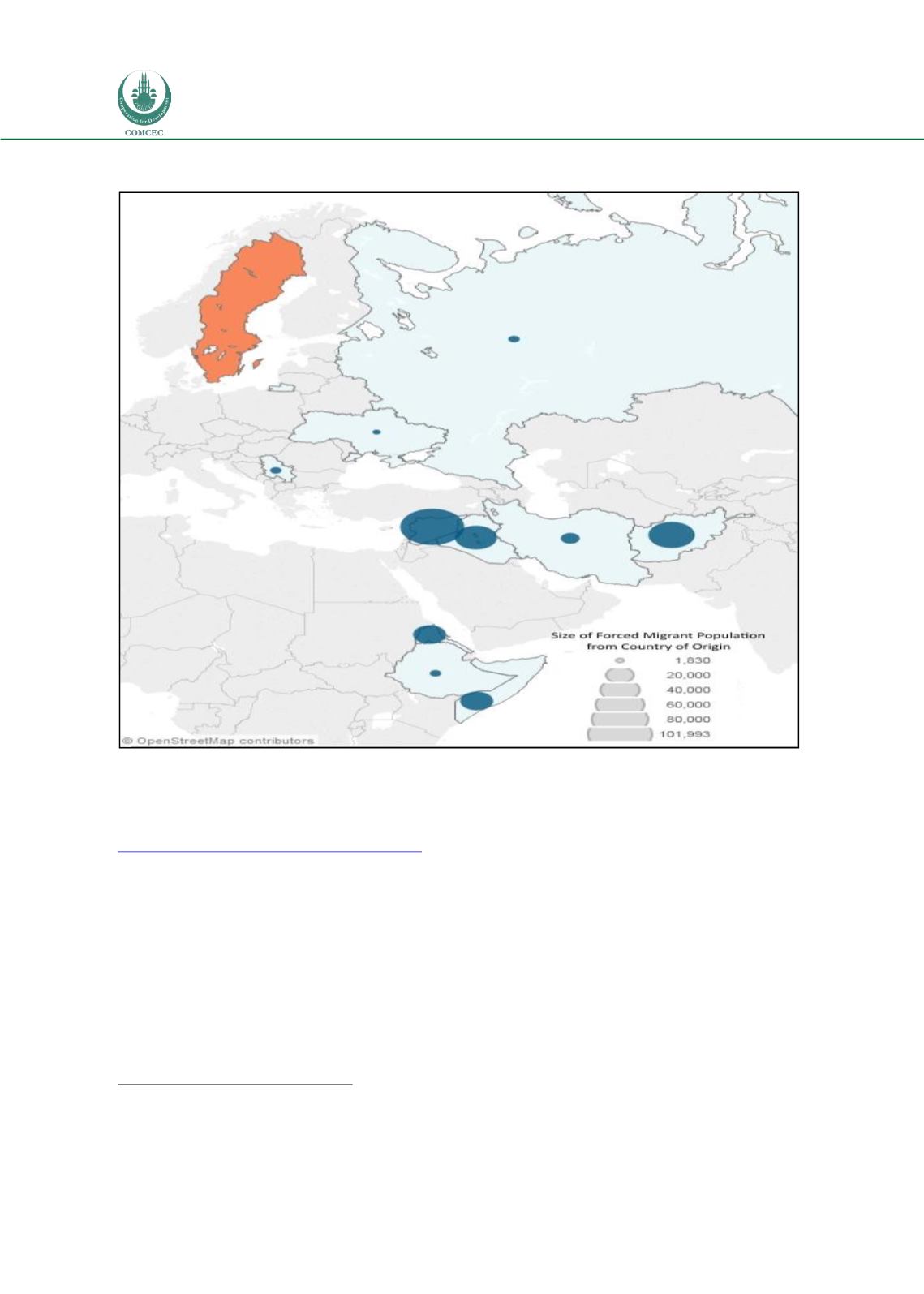

Forced Migration in the OIC Member Countries:
Policy Framework Adopted by Host Countries
150
Figure 21: Top ten countries of origin of forced migrants residing in Sweden, 2015
Note: Forced migrants is defined in this figure as refugees and asylum seekers residing in Sweden as of 2015.
Forced migrants from Serbia are grouped together with those from Kosovo in these figures. Additionally, it
should be noted that many forced migrants in Sweden were formerly stateless (24,275 total) or arrived from
unknown countries of origin (2,196 total).
Source: UNHCR, “Population Statistics,” accessed August 9, 2016,
http://popstats.unhcr.org/en/persons_of_concern .Demographic characteristics of forced migrants
Asylum applicants in Sweden are likely to be male. In each of the last five years, two thirds or
more of asylum claims were filed by men.
114
They also tend to be relatively young. Since 2008,
three quarters or more have been below the age of 35 (see Figure 22). A growing number are
children below the age of 18, many of whom have traveled to Sweden alone. In 2015, over 20
percent (35,250) of asylum claims were filed by unaccompanied children.
115
While the factors
compelling unaccompanied children to seek protection in Sweden are complex, a few
particular factors may have contributed to this trend. First, over two thirds of unaccompanied
114
Eurostat, "Asylum and first time asylum applicants by citizenship, age and sex Annual aggregated data (rounded)
[migr_asyappctza]," updated March 18, 2016,
http://ec.europa.eu/eurostat/web/products-datasets/-/migr_asyappctza115
Eurostat, "Asylum and first time asylum applicants by citizenship, age and sex Annual aggregated data (rounded)
[migr_asyappctza]," updated March 18, 2016,
http://ec.europa.eu/eurostat/web/products-datasets/-/migr_asyappctza















